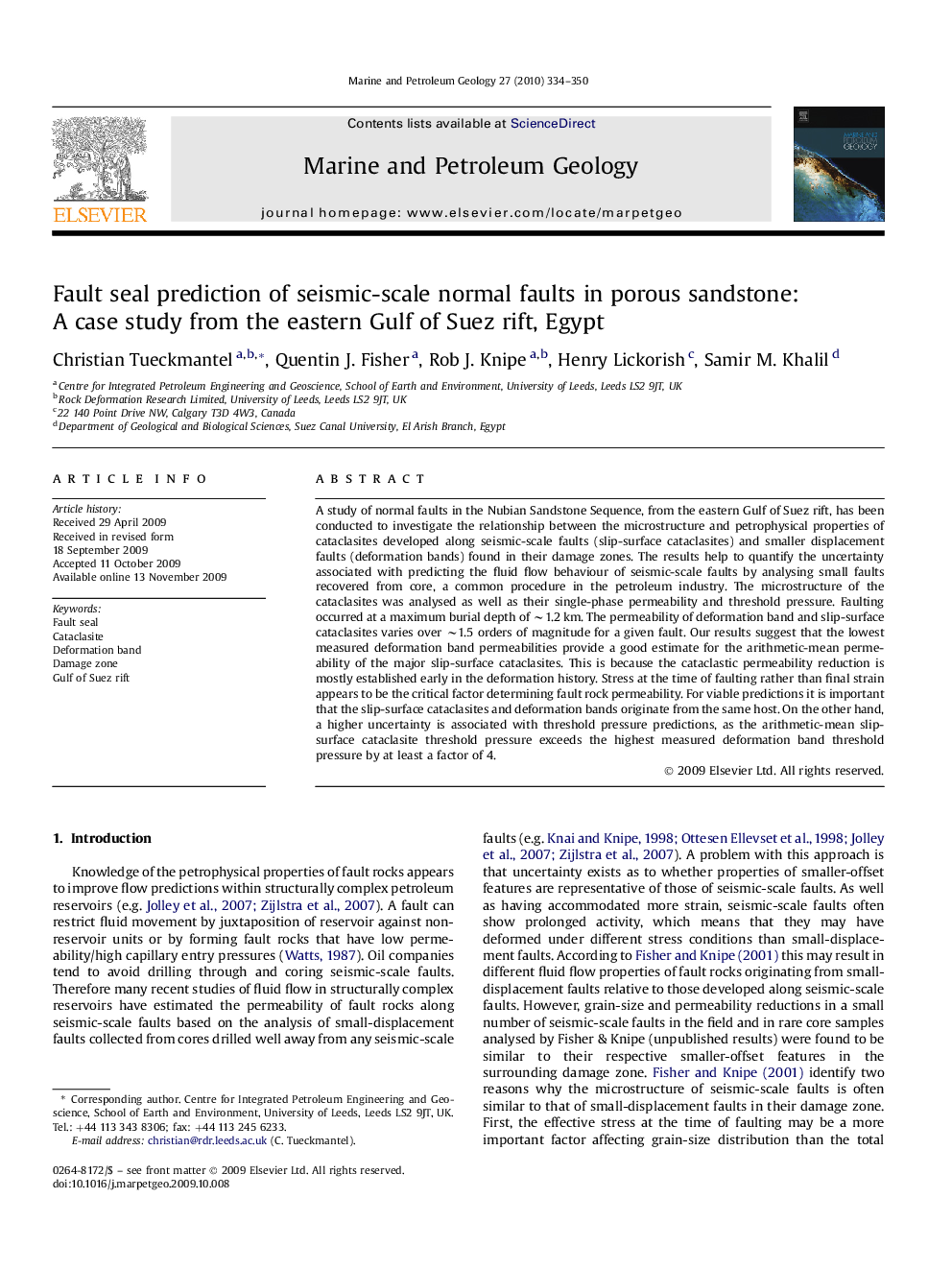| Article ID | Journal | Published Year | Pages | File Type |
|---|---|---|---|---|
| 4696521 | Marine and Petroleum Geology | 2010 | 17 Pages |
A study of normal faults in the Nubian Sandstone Sequence, from the eastern Gulf of Suez rift, has been conducted to investigate the relationship between the microstructure and petrophysical properties of cataclasites developed along seismic-scale faults (slip-surface cataclasites) and smaller displacement faults (deformation bands) found in their damage zones. The results help to quantify the uncertainty associated with predicting the fluid flow behaviour of seismic-scale faults by analysing small faults recovered from core, a common procedure in the petroleum industry. The microstructure of the cataclasites was analysed as well as their single-phase permeability and threshold pressure. Faulting occurred at a maximum burial depth of ∼1.2 km. The permeability of deformation band and slip-surface cataclasites varies over ∼1.5 orders of magnitude for a given fault. Our results suggest that the lowest measured deformation band permeabilities provide a good estimate for the arithmetic-mean permeability of the major slip-surface cataclasites. This is because the cataclastic permeability reduction is mostly established early in the deformation history. Stress at the time of faulting rather than final strain appears to be the critical factor determining fault rock permeability. For viable predictions it is important that the slip-surface cataclasites and deformation bands originate from the same host. On the other hand, a higher uncertainty is associated with threshold pressure predictions, as the arithmetic-mean slip-surface cataclasite threshold pressure exceeds the highest measured deformation band threshold pressure by at least a factor of 4.
